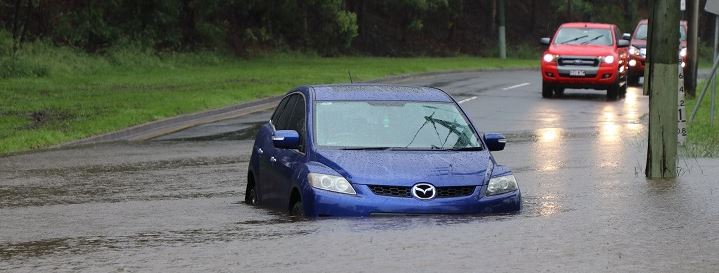How to Avoid Purchasing a Flood-Damaged Vehicle
Looking to buy a used car? Avoid the risks of flooded vehicles with our tips on spotting them before you make an expensive mistake.

In 2023, there were an estimated 452,000 water-damaged cars on the road from past flooding events – a 13% increase from 2022 according to Carfax.
Past hurricanes have likely contributed to this number, with over 358,000 vehicles damaged by Hurricane Ian also stated by Carfax. Hurricanes Harvey and Irma wrecked an estimated 637,000 vehicles, respectively, and Hurricane Sandy flooded another 250,000. Whether you live in a flooded or flood-prone region or not, it’s not uncommon for flooded vehicles to be sold in states other than where it was damaged. Used vehicles prices are up due to their high demand and low supply so be cautious when purchasing a used vehicle, wherever you are.
Most states require a vehicle’s history report to include a flood or salvage title disclosure. However, states have different titling laws, and some are more lenient that others, which allows the possibility for vehicles to be sold and bought without a branded title.
So how do you know if a vehicle has been in a flood? Here are some resources and tips.
Look up the vehicle on these resources:
- National Motor Vehicle Title Information System (NMVTIS) is an online tool that provides background checks on vehicles.
- Carfax provides a vehicle history report that includes a flood damage check.
- National Insurance Crime Bureau offers a free VIN-check service.
Inspect the following on the vehicle:
- Carpets. If the carpets smell musty or appear to be brand new in an older vehicle, be suspicious.
- Seats. If there is evidence the seats have been removed or replaced, it could have been to dry carpets. Check the seatbelts and upholstery as well.
- Lights. Look for any visible water lines on headlights and taillights.
- Rust or Corrosion. Check for rusty screws, nuts, or bolts in the console area and around doors, under the dashboard, and even inside the hood. This damage may be caused by water.
- Under the hood. Caked-on mud, water lines, or debris in hard-to-clean places can be a telltale sign of trouble.
- Drain plugs. If these look like they have been removed recently, it may have been to remove water.
- Power options. Faulty windows, locks, wipers, AC, and electronics can indicate prior water damage.
Follow these tips to help avoid purchasing a flooded vehicle.

